
32 minute read
Self-defence strategies for first responders Self-defence strategies for first responders Part 2: Some basic advice – by Morné Mommsen
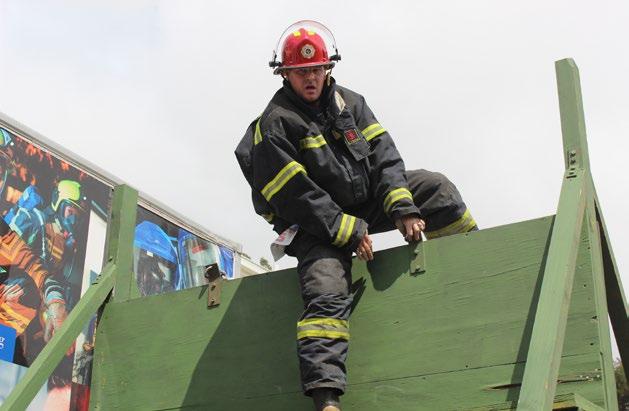
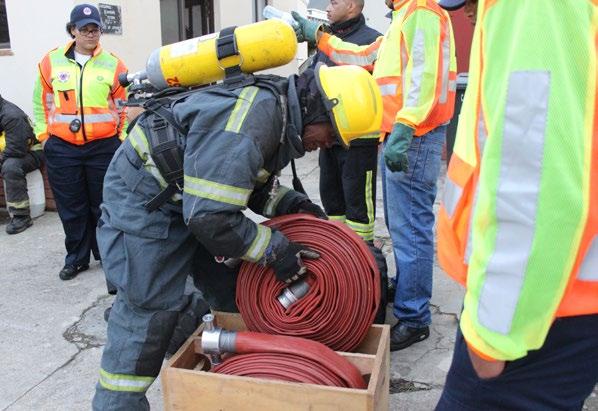
Advertisement
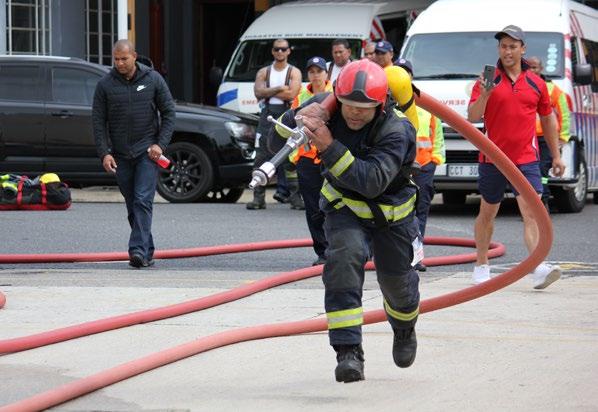



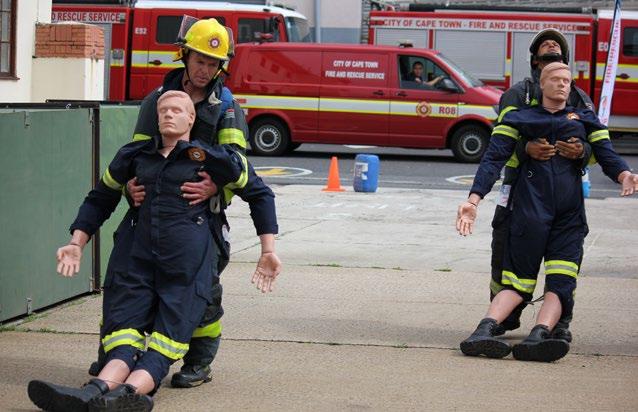

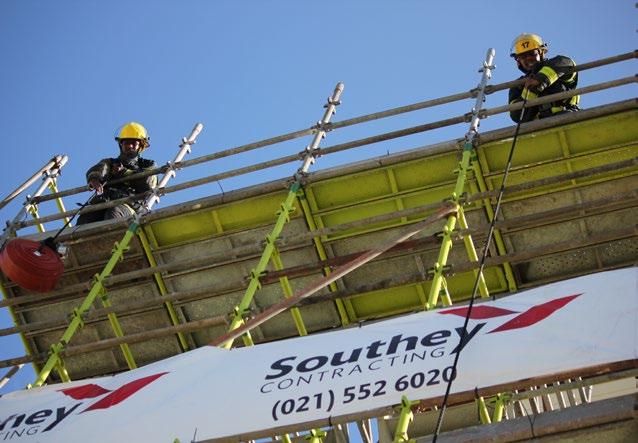
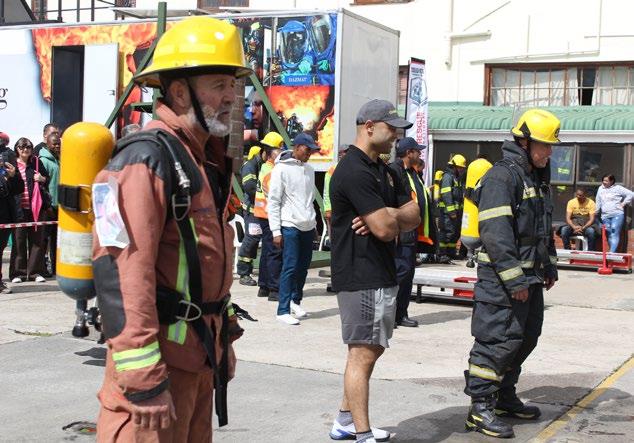




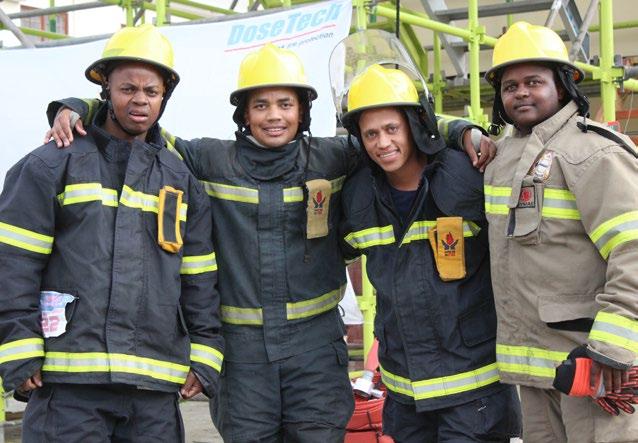
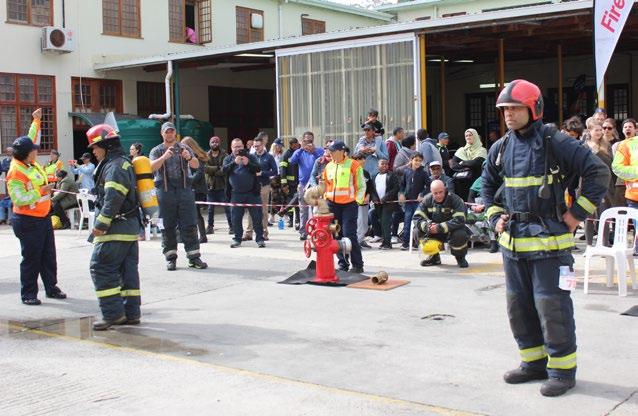



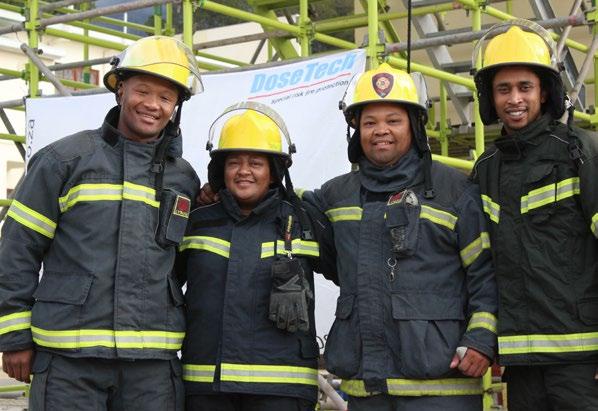
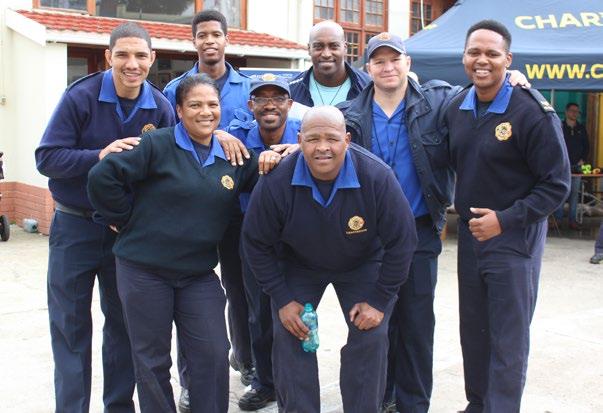





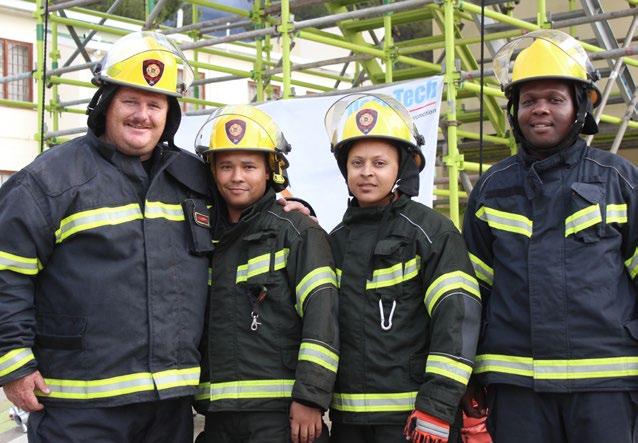

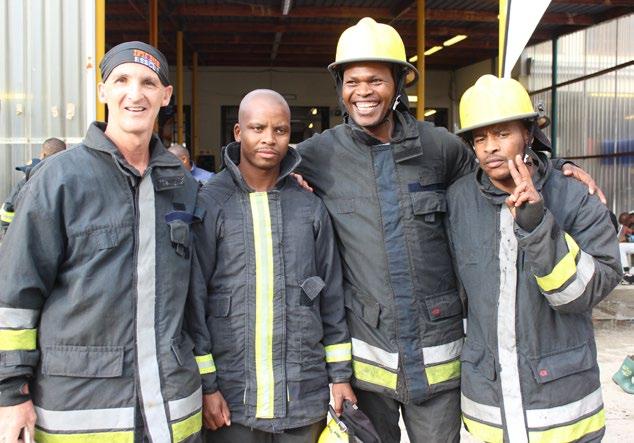
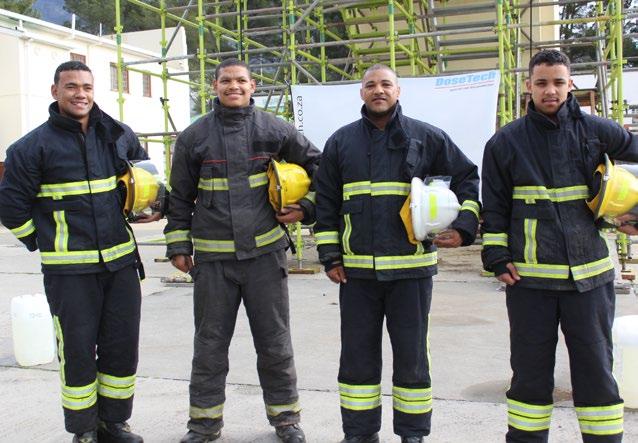

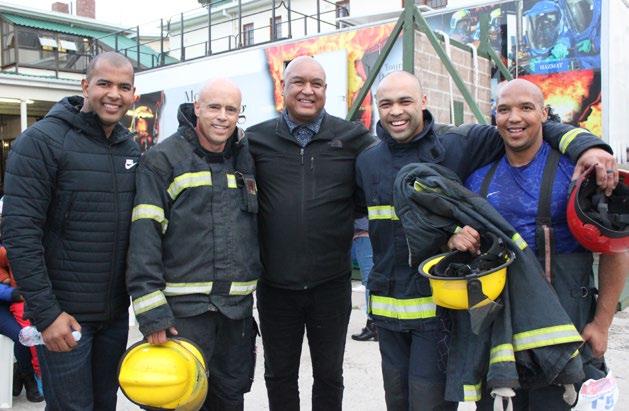

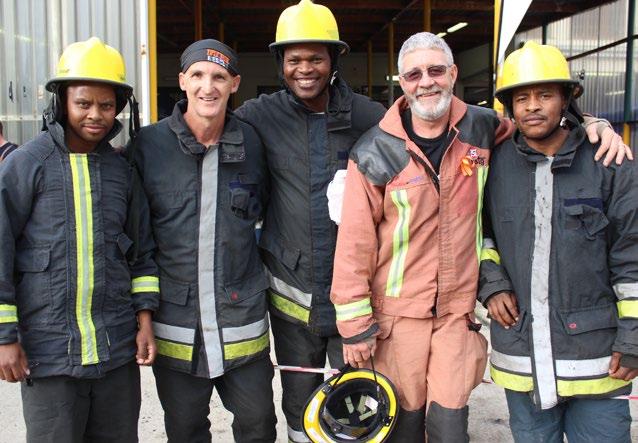
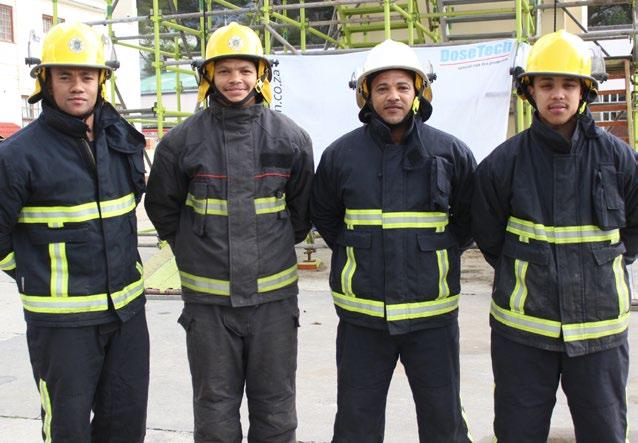
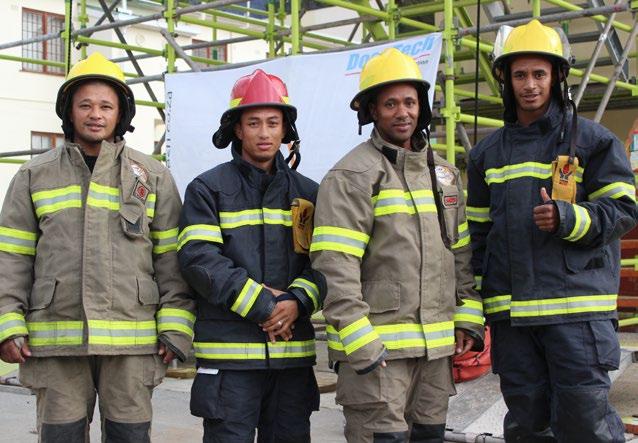

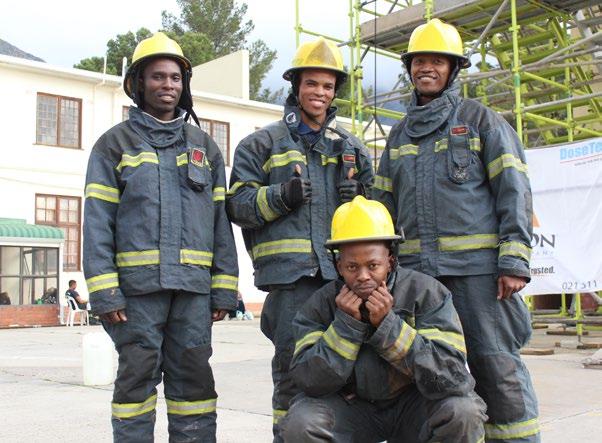

Self-defence strategies for first responders Part 2: Some basic advice
By Morné Mommsen, Midvaal Fire and Rescue and Warrior Combative
South Africa is known for its high rate of violent crimes. Knives, guns and batons are the most common weapons used during an attack
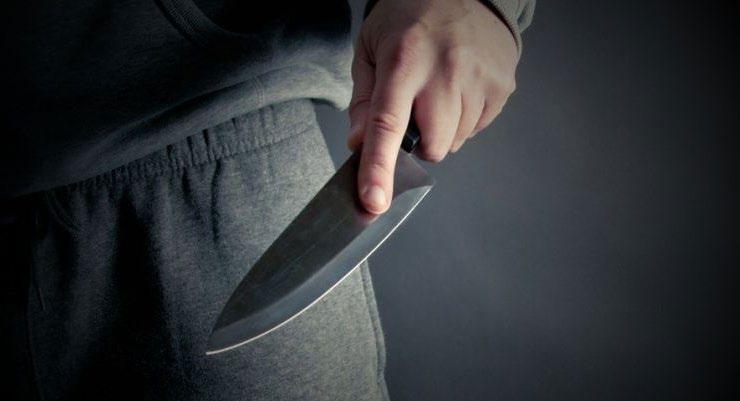
This is the second article in the series of articles discussing self-defence for first responders written by Morné Mommsen. Emergency service members need to get regular training in some kind of self-defence system. Mommsen represents Warrior Combative who specialises in the Krav Maga System, a National Fire Protection Association (NFPA) Self Defence Course designed for the purpose of defending yourself against the reality on the street. Please heed this advice and act on it by training regularly. Also, please share it with those in your department/company to ensure their safety.
Violent crimes South Africa is known for its high rate of violent crimes. Knives, guns and batons are the most common weapons used during an attack. The most popular of these weapons are knives. The reason why criminals prefer knives are because they are easily concealed, readily available and deadly, thus making the knife the most commonly used weapon in a street attack.
A knife also lends the attacker the courage and ruthlessness that he ordinarily would not possess, for it gives the attacker the ability to cut you down with one thrust or to do grievous bodily harm to you while making a serious of non-committed slashing, stabbing and flicking like movements while charging you down. Within seconds you may lose your fingers, have severed tendons in your arms and be finished with a stab to your eye, throat or torso. The reality is, even a five-year old child with a knife is dangerous.
During a confrontational situation you could be faced with two types of knife attacks.
The first is committed by someone who you are arguing with and a knife happens to be handy. This person is not likely to stab or cut you but will use the knife in a threatening and intimidating manner. At this point it will be a good idea to point out to your attacker the consequences of his actions should he stab or cut you. A person who is not used to fighting with a knife may listen to reason.
The second type of knife attack involves someone who usually
carries a knife and is confident in his ability to use the knife. Should you find yourself in this situation, back down and run away if you can. However, should you find yourself in a situation where you are forced to fight, carry out the following actions: 1.Calm down, assess the situation 2.Look for a blocking object, such as a briefcase, handbag or a chair.
Turn the chair diagonally, with one leg pointing to his chest and one to his groin area 3.Wrap a jacket or coat around your arm as protection from the knife 4.Stay out of range if the attacker is slashing 5.Throw sand, dirt or coins at his face. Kick him in the groin and run 6.Use a stick, broom, umbrella, bottle to attack the knife hand at the wrist 7.Never try kicking the knife out of his hand 8.Always report the incident to the police
When confronted by a gun It has become an ever increasing reality within South Africa and around the world that people are using guns to commit acts of violence against each other. A reason for this is that guns are becoming more readily available even with stringent laws on the issue and use of fire arms. Guns are intimidating and it lends its user the confidence he would not usually have under normal circumstances. Imagine if you will, a six or seven year old picking up a gun, cocking it and pointing it at you. It will literally send shivers down your spine. With a child you could still negotiate or even bribe the child to give you the gun. With a person that has an intention of using it to hurt you or kill you, there is very little chance of negotiating.
It is very difficult to offer any form of defence against a person holding a gun on you. If a criminal carries a gun and points it at you, you have to assume that he will use it. In most cases, the criminal will have no idea how to use it, which makes him more of a threat, as a miss fire can happens at any time. In the event that you are being threatened by an assailant holding a gun and depending on the situation, running away should be your first plan of action, if possible. A distance of 20 metres from the assailant will suffice, as a moving target is harder hit. If he starts to shoot as you’re making your escape, try to run in a zigzag or another unpredictable pattern as this will increase your chance of escape.
If there’s no way out, then you need to assess the situation. Most robberies end without violence, so it may make sense to cooperate with the gunman. However, if you’re confronted by a criminal who is determined to hurt or kill you, then you need to fight for your life. A good idea would be for you to snatch onto the weapon with both hands move your body out of the way of danger and point the weapon towards the assailant. He will think twice about pulling the trigger. Should you wrestle the weapon of him take the weapon to the police and report the incident.
Within Krav Maga there are drills and techniques for disarming a person holding a gun on you. However, these techniques need to be practised over and over in a safe and controlled environment with special training guns designed for that exact purpose. YouTube cannot teach you the proper techniques!
Bullying Little Johnny X thoroughly enjoys school. He is a well-mannered child with a polite disposition and he is well-liked by his teachers and fellow classmates. He does tend to be on the shy side but this all adds to his innocence and charm, he looks at the world with excitement and wonder.
As the year progresses his parents notice subtle changes in his behaviour. Suddenly he becomes very withdrawn, he cries frequently for no reason; he does not want to go to school, constantly complains about tummy aches and headaches for no apparent reason and starts referring to himself and class mates as losers and jerks. They also notice bruising on his arms and legs but assume it’s from his extra mural activities. Both his parents and his teacher notice his lack of interest in school as his school work continuously gets sent home incomplete.
His parents and teacher arrange for a meeting so that they can discuss his recent behaviour and find a positive outcome. During the session the teacher asks if all is well at home. Are the parents getting a divorce? Is there anything that the school should be aware of? The parents reassure the teacher that all is well.
They eventually sit Johnny down and have a heart-to-heart discussion and reassure him that they want to help and ask if anything is bothering him. He mentions that since he has started going to extra classes the other kids have started to tease him. He tries to run away from them but he is not fast enough and they push him to the ground. He did not want to say anything because he does not want anyone to get into trouble.
Johnny is a victim of being bullied.
Unfortunately, teasing is part of growing up; almost all of us have experienced it. However, teasing becomes bullying when it is repetitive or when there is conscious intent to hurt the other person whether it is verbally, physically or psychologically. According to a study at the University of Johannesburg, bullying is rife in South African schools. Bullying has no social, economic or racial composition and its one of the biggest non-academic threats to face South African schools.
Should you suspect that your child is being bullied make an appointment with the school and report it? It is wise not to get into a heated argument with the other child’s parents. Have a third party mediating like a teacher, counsellor or minister. It will also be wise to enrol your child in a good martial arts programme as this will allow the child to build up their confidence and self-esteem. Bullies pick on those who they perceive as being weaker and who will not fight back. There is a place and time to walk away but there also comes a time to stand and fight back!
How to avoid getting into a fight It has finally arrived; you have been waiting and planning for this night now for weeks. It’s time to let your hair down, have some fun and catch up with some old friends. You have all decided to meet for a light meal and then go out to a cocktail bar for some drinks and maybe some dancing. The night is progressing as planned. The meal went well and now it’s time to party, time to have some fun. It’s time to unwind and enjoy.
You frequent your favourite cocktail bar/ night club. The cocktail bar is rather full, people are dancing and enjoying themselves the energy is electric. You make your way to the bar, you order your drinks while you are patiently waiting for your drinks and innocently observing the crowd you suddenly hear the following…. “You, hey you! What are you looking at?” You pay no mind as the person can’t possibly be speaking to you. Then you hear it again, only this time it’s louder. “Hey you, I’m talking to you. What you looking at?” You motion to yourself the person nods their head and shout “YES YOU!”
Now this is where the situation becomes tricky and can escalate into a full blown fist fight with both of you being escorted out of the bar by the security. This is where you need to have your wits about you and defuse the situation quickly.
This is what NOT to do or say: You: “Nothing” Stranger: “Are you looking at me? Do you have a problem?” You: “No!” Stranger: “Are you calling me a liar?” You: “No” Stranger: “So you are looking at me? Or are you looking at my man/ woman?” You: “Listen, I don’t want trouble” and you turn you back on the stranger.
The next thing you feel is a hand on your shoulder and as you turn around the last thing you see are stars as your face makes contact with the stranger’s fist. The last thing you recall hearing is, “Well trouble has just found you”. Here is what you should do: When asked “What are you looking at!” Here is opportunity to defuse the situation and be creative. You can answer in one of the following ways. Smile and say “Yes, I am looking at you. You remind me of someone I worked with/ went to school with etc” or “Yes, I am looking at you, I love your dress/shoes/shirt. Where did you buy it?” Be creative and in charge when answering without being cocky. Then offer to buy that person a drink and remove yourself from the situation. Best thing to do is to go to another cocktail bar but should you wish to stay there alert the bars security to what has happened and stay close to your friends. Remember there is strength in numbers. Do not make a scene.
Road rage Your day at the office has come to an end, now all you want to do is get home, relax and recover from your hectic day at the office. You climb in your car and make your way home. As you are busy driving home you put some music on to ease the mood, you obey the rules of the road and you realise that you are in the wrong lane, so you indicate and change lanes. Suddenly from behind you hear a loud ‘honking’ noise. You look into your rear view mirror and see the driver in the vehicle behind cursing you while he leans on his hooter as you changed lanes. You decide to ignore the driver and put your music louder. The traffic light turns red you slow down and bring your vehicle to a halt. As the vehicle stops you feel it being bummed from behind, as you look up there is the driver, right by our window cursing and demanding you get out of your vehicle in a threatening manner and starts grabbing at your door handle…. You have just become a victim of road rage.
Road rage mainly occurs when drivers are believed not to have any consideration for other road users. That’s because anyone can take offense at what they think another driver is doing. Confrontation normally occurs when one driver does something to annoy another. These confrontations can escalate into physical attacks and even death. Tips to help you avoid inciting road rage in others: • Drive at a safe, steady speed • Give clear indication of your intentions in plenty of time • Stay within the general flow of traffic • Stay in your correct lane • Avoid being deliberately obstructive to others • Avoid ‘cutting in’
Dealing with road rage: • Smile and mouth the words
“I’m sorry” • Avoid eye contact if the other driver pulls up alongside you • Do not make obscene gestures • Try to avoid stopping or being forced to stop at traffic lights, especially at night • Attacks can only occur if the vehicles are stopped and the drivers confront each other • If you do get forced to stop, make sure your doors are locked and windows rolled up • Never get out your vehicle, unless you are involved in an accident • If you find the attacker is trying to force his way into your car, hit the horn and hold down till they lose interest • Report the incident to the police
Travelling Whether travelling locally or abroad on business or pleasure the appeal of new sights and surroundings is what makes the adventure exciting. Yet, for these specific reasons it could hold potential dangers for the unwary... More and more we read of women travellers being abducted, found dead or sexually assaulted, both locally and in foreign countries. The reason for this is that women, especially western women, are believed to be promiscuous; this is fuelled by magazines, movies and social media. Added to this, many Third World countries and cultures do not see women as equals but as second class citizens and that they are easy prey to the advances of urban predators, especially when travelling to countries where they have strict dress codes for women to adhere to like the Arab countries, even some African countries like Malawi.
Guns are intimidating and it lends its user the confidence he would not usually have under normal circumstances

This is sad as most people travel to enrich their lives with sights and cultures from around the world. However, a few precautions and common sense can eliminate or greatly minimise the risks associated with travelling.
Getting ready for your trip locally or internationally: • Plan your route carefully in advance • Use up-to-date maps • Check in advance for any road works if you are travelling by car or bus • Let someone close to know when you will be leaving and arriving at your destination • Do research on the hotel and area you will be staying in ie nearest police station, hospital etc • Should you be travelling to foreign country, research their laws, customs and traditions, crime rate etc, familiarise yourself with it • Keep your travel documents safe, ID book, drivers licence, credit cards, medical aid card travel documents and passport (passport if going international).
Should these documents get lost it becomes a headache to
replace. Have additional certified copies in a safe place that can be used to assist you at the embassy or police station • Once you there inform someone back in your home town that you have arrived and that you are safe. Arrange to call them every so often • Should you be travelling to a foreign country learn some of their words. Example, what is their word for ‘HELP’, ‘POLICE’,
‘FIRE’ etc.
Once you have reached your destination, look confident and dress like the locals so you don’t attract any unwanted attention to yourself such as wearing flashy clothes, jewellery or flaunting large amounts of money. By learning to blend in, you will be less of a target. However, if you look rich or as a tourist you become a far more tempting target. Most important rule to remember is, “When in Rome do as the Romans do”.
Self-defence tips while jogging Often in the early morning or late at night as I travel to and from my various classes, I see men and women of all ages jogging around the neighbourhood. Some joggers are serious; they are training towards a goal and others are just unwinding and letting off some steam. While going for a jog around the neighbourhood is an excellent way to stay in shape and calm the mind, it does present certain dangers, especially when jogging alone.
Besides being harassed or chased by the local neighbourhood dogs, one of the creepiest and scariest of all these dangers is that of being followed. This is when a sixth sense can cause you to become super alert to the foot fall, snapping twigs or other sounds that seem to keep occurring behind you, especially when it seems that nobody else is about.
You would be asking yourself the following question. Who would want to follow me and why? For starters, an angry ex or their family, a stalker, someone you managed to anger at work or on the way home and that person now wants to confront you or a criminal who has the intention of robbing or harming you.
Give and take but don’t overdraw
By Wayne Bailey
Wayne Bailey

Back when I was younger and getting ready to get married, a wise man said three things that will make or break your marriage. Money, sex and religion. He said having too much need or not enough could be a deal breaker and end in divorce.
How does that apply in today’s work environment? We can pull and set the reins on a horse and go nowhere or we can set them too lose and the horse gallops away. In the work environment, the reins that are too tight, is the micro manager. Is that you? He’s the boss that is always looking over the shoulder of his subordinates. This is okay if they are new and not sure of the ropes. In the ‘One Minute Manager’ book, the author said the boss tried to catch the employee doing something good and reward them instead of the other way around.
If the reins are too lose in the work environment, you’re never seen by your staff, maybe you retired and forgot to tell someone you were leaving. This could be good and bad. The good part is if your subordinates have a clear direction of the job and there’s no need to discuss the dailies. The bad part is your subordinates may think you don’t care what they are doing. Get out and visit the troops often and see what’s going on. It’s easier for them to talk over the dinner table verses going to your office.
In the end, always be thinking what you can give the organisation. There will be times there is an “Oh heck” moment and a withdraw is made. Giving always insures you’re never overdrawn and come up short.

Safety when jogging: • Firstly and most importantly always go for a run with a partner.
There is safety in numbers • Run in a familiar location where you will be able to find help quickly • Wear reflective or brightly coloured running gear • Make sure your family or friends know where you are running and when you expect to return • Avoid taking short cuts • Stick to well-lit areas • Trust your instincts, should you feel you are being followed cross the road several times and see who follows you • Don’t be forced to change your route • Bring a cell phone in case you need to call for help
If somebody approaches you in a way that makes you feel unsafe, yell any of the following in a powerful voic,e “TELL ME WHAT YOU WANT.” “GO AWAY” FIRE” “LEAVE ME ALONE” Make a scene criminals do not like attention being focussed on them.
Run away from a dangerous situation, if you are able to. Do everything in your power to escape from the assailant. If all else fails, fight and run away and report the incident to the Police. You could use your water bottle, house keys and pepper spray and even your cell phone as weapon of self-defence.
Warrior Combative focusses on Krav Maga styles. If interested in any form of assistance please contact us via email: Gauteng: dnaemergency@gmail.com Meyerton: davidkies.dk74@gmail.com Cape Town: pvogts1@gmail.com
Fire hydrants: a 220-year old invention
Afire hydrant is a pipe with a valve that controls the water flow from a water main in order to quench a fire; a connection point by which fire fighters can tap into a water supply and is a component of active fire protection. Fire hydrants may be underground and above-ground. The underground fire hydrants were in use in Asia and Europe since the 18th Century while pillar-type hydrants are a 19th-Century invention.

The change from random to strategic water supply systems Historically, fire fighting was not as systematic as today’s effort. At best, ancient cities deployed cisterns to strategic areas to provide quick access to water in case of fire. Before piped mains supplies, water for fire fighting had to be kept in buckets and cauldrons ready for use by ‘bucket-brigades’ or hand pumping systems to get the water to extinguish fires and later brought with a horse-drawn fire-pump. Wherever it was hard to supply large quantities of water, bucket brigades needed to keep whole neighbourhoods safe from fire. However, buckets weren’t enough to confront the infernos of larger cities. From the 16th Century, as wooden mains water systems were installed, fire fighters would dig down the pipes and drill a hole for water to fill a ‘wet well’ for the buckets or pumps. The fire fighters would pass buckets of water from the hole along a line of fire fighters to help get water to the fire. The term ‘fire plugs’ began to be used since the newly dug holes had to be plugged up after the fire call. A marker would be left to indicate where a ‘plug’ had already been drilled to enable fire fighters to find ready-drilled holes.

While fire plugs were useful during the 16th and 17th centuries, alone they were not enough to prevent disaster. The fire of London in 1666 showed that random placement of fire plugs were not enough to put out massive fires. After this, London and other European cities created new water mains with pre-drilled fire plugs placed at street level. This way, mains were more accessible to wider parts of the city. Frederick Graff Sr, who patented a post-style fire hydrant in 1801

Hydrant sign in Cork, Ireland, dated 1858. The letters ‘FC’ indicate the old name for a hydrant, firecock Diagram on an L-hydrant from Otto Lueger’s dictionary of technology, 1904



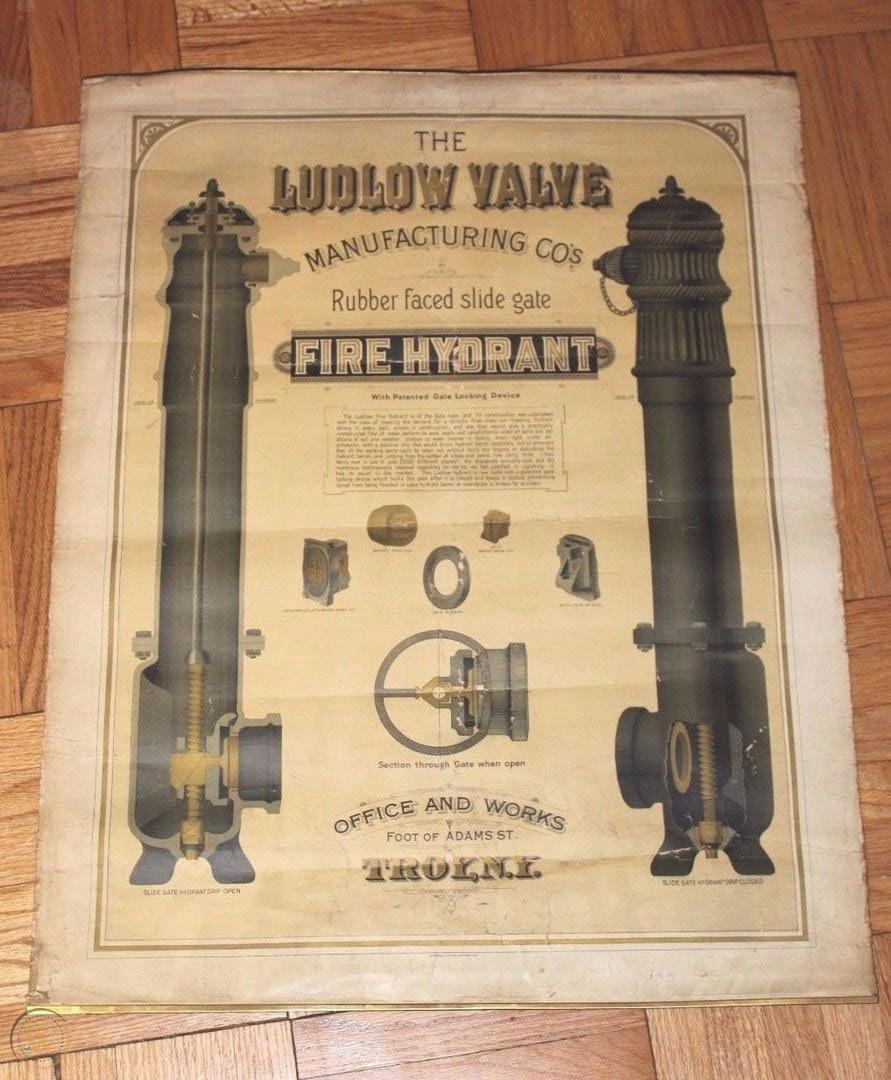
Ludlow fire hydrant advertising wall hanging. This is a later 1800’s or early 1900’s piece that is printed on paper and applied to a linen backing. Victorian fire hydrant
Later, wooden systems had pre-drilled holes and plugs. When cast-iron pipes replaced the wood, permanent underground access points were included for the fire fighters. Some countries provide access covers to these points, while others attach fixed above-ground hydrants.
First hydrant Tradition has it that in 1801, Frederick Graff Sr, chief engineer of the Philadelphia Water Works, patented a post-style fire hydrant resembling what we use today. Graff, a hydraulic engineer, was born on 27 August 1775 in Philadelphia, US and died on 13 April 1847 at the age of 71. A former carpenter, Graff’s team’s original design was a simple wooden barrel filled by the city’s water supply with a valve fitted to it. The build-up of water in the barrel provided the required pressure to fill a simple fire hose to deliver water to the base of the fire. Although now we would regard this system as archaic, the team had created a system that highly exceeded the manned bucket chain system implemented at the time. Ironically, the original patents registered by the Philadelphia Water Works appeared to have been lost in a fire!
In 1803, Frederick Graff Sr introduced an improved version of the fire hydrant with the valve in the lower portion. These were inserted into wooden mains with a tapering joint. In 1811, Philadelphia claimed to have 230 wooden hydrant pumps and 185 cast iron fire hydrants. When hoses began to replace the city’s bucket brigades after 1803, the hydrants were outfitted with suitable nozzles.
In the winter months, these essential weapons in the battle against fire were under constant assault by ice. On the coldest nights, watchmen inspected the hydrants hourly, releasing small amounts of water to prevent freezing. Water won’t freeze as long as it stays inside mains buried below the frost line. An obvious but mechanically difficult solution was to keep water out of the hydrants until it was needed. The predecessors of today’s ‘dry barrel’ compression hydrants appeared as early as 1812, according to Thomas Ingalsbe, a hydrant salesman and the owner of a website for hydrant aficionados. In dry-barrel hydrants, water enters through a valve located below the frost line and then drains from the barrel when the hydrant is not in use.
Ingalsbe, who became interested in fire hydrant history while attempting to scrounge parts for clients with very old hydrants, says that it wasn’t until the 1850s that dry-barrel hydrants became truly practical. The basic configuration of most American hydrants has changed



A modern day fire hydrant in Berlin, Germany History of City of Calgary fire hydrants

little since. A stem nut, usually on the top of the hydrant, opens a valve to admit water into the hydrant. Closing the main valve automatically opens a drain valve, allowing the hydrant to empty. In areas where freezing is not an issue, many municipalities use the ‘wet barrel’, which is less expensive and simpler in construction and can be activated more quickly because it is filled with pressurized water at all times. The practice of using a separate system of high-pressure water mains just for fire fighting began in Rochester, New York, in 1874 and has spread to most major cities.
Other sources say that first fire hydrant was invented by George Smith, a fire fighter, in about 1817, when he realised that Manhattan, where he lived, was running out of water for citizens to use, not just for fighting fires but for every day uses as well. He reasoned that with the installation of water mains, Manhattan would have more water for drinking as water could be pumped to the city from outside its boundaries and there would also be enough water readily available for fighting fires.
Storz coupling Carl Storz patented his quick coupling in Switzerland in 1890 and shortly thereafter the Storz coupling became the norm on hydrants in many parts of Europe. But it took nearly a hundred years before Storz started becoming common on hydrant steamer ports in the USA.
The fire hydrant adapts to the modern world While hydrants have stayed mostly the same for the last hundred years, new improvements have developed to increase security and efficiency. New fire hydrant designs delivered more water when needed. They became crucial instruments in putting out fires fast and efficiently. Security has always been a concern for fire hydrants. With the popularity of cars, fire hydrants faced a unique challenge. Collisions could lead to geysers of wasted water and supply problems in local systems. In response, dry barrel compression hydrants added an extra valve protection under the hydrant, while the base of hydrant was manufactured with breakable components to protect the water main.
As threats of metal theft, vandalism and even terrorism increase, manufacturers have introduced new protection systems that make unauthorised use of hydrants more difficult.


2020
January

19 - 21 January 2020 Intersec 2020 For major brand manufacturers, newcomers, local or international, Intersec, with its unique product diversity, is one of the most important industry meeting points and a source of technologies for wholesale and retail trade as well as for corporate buyers and the government Venue: Dubai, UAE For more information visit: https://intersec.ae.messefrankfurt. com/dubai/en.html
February
10 February 2020 JOIFF Foam Technical Summit There is a clear need within the industry for an impartial, independent and authoritative Technical Summit to discuss the current issues relating to fire fighting foam. JOIFF, as a truly independent organisation that has no commercial interest in foam but that has a major interest in informing and educating its members, are ideally placed to host a full spectrum, truly independent Technical Foam Summit Venue: London, UK For more information visit: http://joiff.com/events/
March
19 - 20 March 2020 Institution of Fire Engineers (SA) General Meeting The Institution of Fire Engineers (SA) will be holding its general meeting together with a seminar and workshops. Among the highlights, the seminar and workshops will discuss challenges faced by fire services and Bruce Varner, International IGA President and ex fire chief from the US, will present a paper addressing the latest ideas Venue: Tyger Valley, Cape Town For more information visit: www.ife.org.za
21 - 25 March 2020 Wildland-Urban Interface (WUI) Conference The International Association of Fire Chiefs (IAFC) Wildland-Urban Interface (WUI) conference offers hands-on training and interactive sessions designed to address the challenges of wildland fire. If you’re one of the many people responsible for protecting local forests or educating landowners and your community about the importance of land management, then this is the conference for you Venue: Reno, Nevada, US For more information visit: www.iafc.org
April
7 - 9 April 2020 North Africa Health Exhibition and Congress The 2020 edition will highlight five key industry areas, imaging and medical devices, laboratory, SME and innovation, medical tourism and national pavilion Venue: International Exhibition Centre, Cairo, Egypt For more information visit: www.northafricahealthexpo.com
May
4 May 2020 International Fire Fighters Day 2020 International Fire Fighters’ Day is observed each year on 4 May. On this date you are invited to remember the past fire fighters who have died while serving our community or dedicated their lives to protecting the safety of us all. At the same time, we can show our support and appreciation to fire fighter’s worldwide who continue to protect us so well throughout the year
12 - 14 May 2020 Africa Health 2020 Africa Health is the largest platform in the African healthcare market for international and local companies to meet, network and do business. Africa Health provides an opportunity for you to see the latest healthcare technologies, products, equipment and services, as well as the chance to network with more than 10 000 of your healthcare industry peers Venue: Gallagher Convention Centre, Johannesburg For more information visit: www.africahealthexhibition.com
June
2 - 4 June 2020 Securex and A-OSH Expo Securex will be the largest and most comprehensive show of its kind in Africa and the only show exclusively dedicated to the very latest developments in security, safety, fire and protection Venue: Gallagher Convention Centre, Johannesburg, South Africa For more information visit: www.securex.co.za
4 - 7 June 2020 International Hazardous Materials Response Teams (Hazmat) Conference The Hazmat Conference is a fourday event offering hands-on training across a range of essential topics, including: biothreat response and sample collection, incident management best practices, chemical and physical properties of hazardous materials; and recognising and responding to commercial explosive incidents Venue: Maryland, US For more information visit: www.iafc.org/events
15 - 20 June 2020 Interschutz 2020 Originally conceived as a trade show for the fire services, Interschutz has grown to become the world’s leading exhibition for fire prevention, disaster relief, rescue and safety and security Venue: Hanover, Germany For more information visit: www.interschutz.de/home
29 June - 2 July 2020 55th Annual GSSA Congress The 55th Annual Grassland Society of Southern Africa Congress will be held in the Eastern Cape. The vision of the society, advancing rangeland ecology and pasture management in Africa embodies the mission of the society and has become the central theme of the annual congress Venue: Eastern Cape For more information email: info@ grassland.org.za
The Rescue
Whatever was the cause of the accident? T’was never meant to happen, and yet it did. Similar events, all drivers must try to prevent ‘Safety First’ must always take the lead.
Somebody has called for help and the bells begin to ring. All of a sudden, fire fighters start doing their thing They call their buddies as they put on their gear, mounting the rig Within minutes - on the road and driving, better than The Stig
The officer decides on the response route, based on time of the day Which lanes must they take, the shorter byway or the quicker highway? The long sirens, the short wail and the blaring horn The kind motorist, the scared motorist and the stubborn one
The scene size-up And the traffic build-up The motor-vehicles have crashed We have one critical patient who is trapped
Bring the oxygen and let the poor man breathe Whatever you do, it must be in kindness indeed Let the crowds stand a bit back please We have to do our job with ease
The vehicle is balanced, rescue motor is running and the spreader is in The shears cut through the metal, the glass and the tin The sun is too hot and the tools are too heavy Hurry up! but remember be steady.
With unbearable pain, closes eyes and grits his teeth. Ask him what his name is and he tells you, it’s Keith Are you feeling the sadness, tears trickling down his face? Try to calm him down, as you pick up your pace
Put up the drip, let the man feel better If there is a need also put the catheter Follow all your actions right down to the letter Please don’t forget to check his blood pressure
He is out and now you must transport him Make sure your lights are not always on dim I mean they must also be on the bright beam Well done all of you for working as a team
Clear up the scene and don’t leave anything behind Hold a debriefing session to clear up your mind Remember that you are the only one of your kind Another one we will never be able to find.
By Lindsay Z Mnguni










